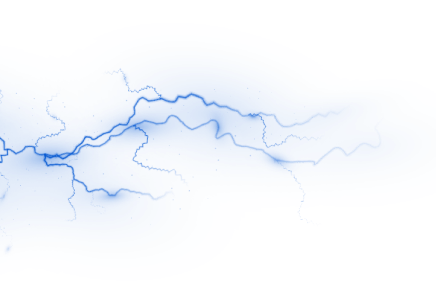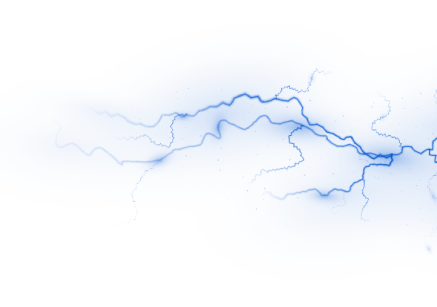CRYSVITA was effective in children with XLH
Actor portrayal
Clinical studies of children with XLH showed that CRYSVITA may help by:
Increasing and maintaining
phosphorus levels in the blood
Helping to heal rickets and
improve leg abnormalities
Improving growth

The benefits and safety of CRYSVITA were looked at in children with XLH across 3 studies
Click on the tabs below to see how each study was conducted
Number of patients: 61
Ages: 1 to 12 years
Length of treatment: 64 weeks
This study compared the effects of CRYSVITA with conventional therapy of oral phosphate and active vitamin D supplements (calcitriol or alfacalcidol).
Number of patients: 52
Ages: 5 to 12 years
Length of treatment: 64 weeks
Study 2 determined a safe and effective dose for CRYSVITA in children aged 5 to 12 years.
Number of patients: 13
Ages: 1 to 4 years
Length of treatment: 64 weeks
Study 3 assessed the safety and efficacy of CRYSVITA in children aged 1 to 4 years.
CRYSVITA helped heal rickets
More children treated with CRYSVITA achieved “substantial healing*” of rickets compared with conventional therapy at week 40
At the beginning of Studies 1, 2, and 3, children had rickets of varying severity (as shown by X-rays).
In Study 1:
- One group of children was given CRYSVITA every 2 weeks, one group continued on conventional therapy
- For all children, improvement of their rickets was examined at weeks 40 and 64
- Radiographic Global Impression of Change (RGI-C) is a 7-point scale used to assess the healing of rickets, and an RGI-C score of ≥+2.0 means substantial healing of rickets
achieved substantial
healing
on CRYSVITA
on conventional
therapy
These results were maintained at week 64.
All 3 studies of children with XLH found that CRYSVITA helped heal rickets.
- Study 1: Average RGI-C score was 1.9 in patients receiving CRYSVITA and 0.8 in patients on conventional therapy
- Study 2: 69% (18/26) of patients achieved substantial healing of rickets at week 40
- Study 3: 100% (13/13) of patients achieved substantial healing of rickets at week 40
Substantial healing is defined as having an RGI-C score of ≥+2.0.
CRYSVITA helped reduce the severity of rickets
Children treated with CRYSVITA saw a greater reduction in the severity of their rickets compared with conventional therapy†
In Study 1, 29 children received CRYSVITA every 2 weeks, and 32 children continued conventional therapy.
Study 1
Number of children studied: 61
Week 40 results
CRYSVITA†
reduction in severity
CONVENTIONAL THERAPY‡
reduction in severity
Week 64 results
CRYSVITA†
reduction in severity
CONVENTIONAL THERAPY‡
reduction in severity
All 3 studies of children with XLH found that CRYSVITA led to reduced rickets severity.
- Study 1: After 40 weeks of treatment with CRYSVITA, mean total Thacher Rickets Severity Score (RSS) decreased from 3.2 to 1.1; in the active control group, mean RSS decreased from 3.2 to 2.5
- Study 2: Children receiving CRYSVITA every 2 weeks saw a decrease in average rickets severity from 1.9 at baseline to 0.8 at week 40
- Study 3: Children receiving CRYSVITA every 2 weeks saw a decrease in average rickets severity from 2.9 at baseline to 1.2 at week 40
RSS was used to assess XLH-related rickets. This is a 10-point scale used to assess the changes in the severity of rickets. Reduction in the RSS score means an improvement in rickets severity.
These values are from Study 1: CRYSVITA week 40 least squares (LS) mean change of -2.0 (95% CI: -2.33 to -1.75) and week 64 LS mean change of -2.2 (95% CI: -2.46 to -2.00). LS mean is a statistic that estimates the mean after adjusting for the effect of other variables in the study, and the 95% CI is a range that includes possible values of the mean reduction in RSS. Note that mean RSS (standard deviation [SD]) at baseline was 3.2 (0.98).
These values are from Study 1: Conventional therapy week 40 LS mean change of -0.7 (95% CI: -0.98 to -0.43) and week 64 LS mean change of -1.0 (95% CI: -1.31 to -0.72). Note that mean RSS (SD) at baseline was 3.2 (1.14).
CRYSVITA also demonstrated improvements in bone abnormalities of the lower limbs in Studies 1 and 3§
Substantial healing is defined as having an RGI-C score of ≥+2.0.
CRYSVITA improved phosphorus levels
Children on CRYSVITA had increased levels of phosphorus in the
blood compared with conventional therapy (at 64 weeks)
Across 3 CRYSVITA clinical studies, children with XLH received CRYSVITA every 2 weeks, and the amount of phosphorus in their blood was measured at weeks 40 (Studies 1, 2, and 3) and 64 (Studies 1 and 2).
In Study 1, 61 children with XLH aged 1 to 12 years were randomly assigned to receive CRYSVITA every 2 weeks or continue with conventional therapy, consisting of oral phosphate and active vitamin D.


Normal phosphorus levels in the blood for this group of patients ranged from 3.2 to 6.1 milligrams/deciliter (mg/dL). The normal range of phosphorus levels in the blood varies by age and sex, and ranges may vary by testing laboratory.
All 3 studies of children with XLH showed that CRYSVITA increased and maintained phosphorus levels in the blood within the normal range.
- Study 2: Average phosphorus levels increased from 2.4 mg/dL at baseline to 3.3 mg/dL at week 40 and 3.4 mg/dL at week 64 with CRYSVITA given every 2 weeks
- Study 3: Average phosphorus levels increased from 2.5 mg/dL at baseline to 3.5 mg/dL at week 40 with CRYSVITA


Normal phosphorus levels in the blood for this group of patients ranged from 3.2 to 6.1 milligrams/deciliter (mg/dL). The normal range of phosphorus levels in the blood varies by age and sex, and ranges may vary by testing laboratory.
CRYSVITA significantly increased height in children
Children on CRYSVITA had a greater increase in height compared with
conventional therapy (at 64 weeks)¶#
In Study 1, 29 children with XLH received CRYSVITA every 2 weeks and 32 children with XLH continued conventional therapy.


In the study, CRYSVITA treatment for 64 weeks increased standing mean (SD) height z-score from -2.32 (1.17) at baseline to -2.11 (1.11) (LS mean [SE] change of +0.17 [0.07]).
Conventional therapy for 64 weeks increased standing mean (SD) height z-score from -2.05 (0.87) at baseline to -2.03 (0.83) at week 64 (LS mean [SE] change of +0.02 [0.04]). The difference between the treatment groups was statistically significant at week 64 (+0.14 [95% CI: 0.00 to 0.29], P=0.0490). LS mean is a statistic that estimates the mean after adjusting for the effect of other variables in the study.
In Study 2, CRYSVITA helped increase height among 26 children with XLH aged 5-12 years, as measured by z-score**
In Study 2, CRYSVITA treatment for 64 weeks increased standing mean (SD) height z-score from -1.72 (1.03) at baseline to -1.54 (1.13) in the patients who received CRYSVITA every 2 weeks (LS mean change of +0.19 [95% CI: 0.09 to 0.29]). LS mean is a statistic that estimates the mean after adjusting for the effect of other variables in the study, and the 95% CI is a range that includes possible values for the change in height z-score.


In the study, CRYSVITA treatment for 64 weeks increased standing mean (SD) height z-score from -2.32 (1.17) at baseline to -2.11 (1.11) (LS mean [SE] change of +0.17 [0.07]).
Conventional therapy for 64 weeks increased standing mean (SD) height z-score from -2.05 (0.87) at baseline to -2.03 (0.83) at week 64 (LS mean [SE] change of +0.02 [0.04]). The difference between the treatment groups was statistically significant at week 64 (+0.14 [95% CI: 0.00 to 0.29], P=0.0490). LS mean is a statistic that estimates the mean after adjusting for the effect of other variables in the study.
Learn more about the possible side effects of CRYSVITA in children

Ready to experience CRYSVITA?
Start the conversation with your child's doctor today.


Stay informed
Learn more about CRYSVITA, connect with a support community, and receive invites to important educational events.
